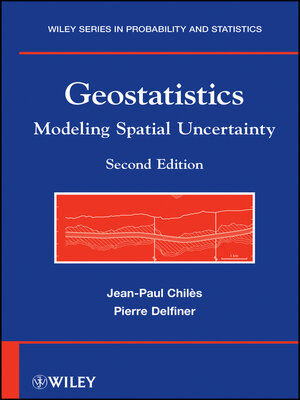Geostatistics
ebook ∣ Modeling Spatial Uncertainty · Wiley in Probability and Statistics
By Jean-Paul Chilès

Sign up to save your library
With an OverDrive account, you can save your favorite libraries for at-a-glance information about availability. Find out more about OverDrive accounts.
Find this title in Libby, the library reading app by OverDrive.



Search for a digital library with this title
Title found at these libraries:
| Library Name | Distance |
|---|---|
| Loading... |
Praise for the First Edition
". . . a readable, comprehensive volume that . . . belongs on the desk, close at hand, of any serious researcher or practitioner." Mathematical Geosciences
The state of the art in geostatistics
Geostatistical models and techniques such as kriging and stochastic multi-realizations exploit spatial correlations to evaluate natural resources, help optimize their development, and address environmental issues related to air and water quality, soil pollution, and forestry. Geostatistics: Modeling Spatial Uncertainty, Second Edition presents a comprehensive, up-to-date reference on the topic, now featuring the latest developments in the field.
The authors explain both the theory and applications of geostatistics through a unified treatment that emphasizes methodology. Key topics that are the foundation of geostatistics are explored in-depth, including stationary and nonstationary models; linear and nonlinear methods; change of support; multivariate approaches; and conditional simulations. The Second Edition highlights the growing number of applications of geostatistical methods and discusses three key areas of growth in the field:
New results and methods, including kriging very large datasets; kriging with outliers; nonse??parable space-time covariances; multipoint simulations; pluri-gaussian simulations; gradual deformation; and extreme value geostatistics
Newly formed connections between geostatistics and other approaches such as radial basis functions, Gaussian Markov random fields, and data assimilation
New perspectives on topics such as collocated cokriging, kriging with an external drift, discrete Gaussian change-of-support models, and simulation algorithms
Geostatistics, Second Edition is an excellent book for courses on the topic at the graduate level. It also serves as an invaluable reference for earth scientists, mining and petroleum engineers, geophysicists, and environmental statisticians who collect and analyze data in their everyday work.







